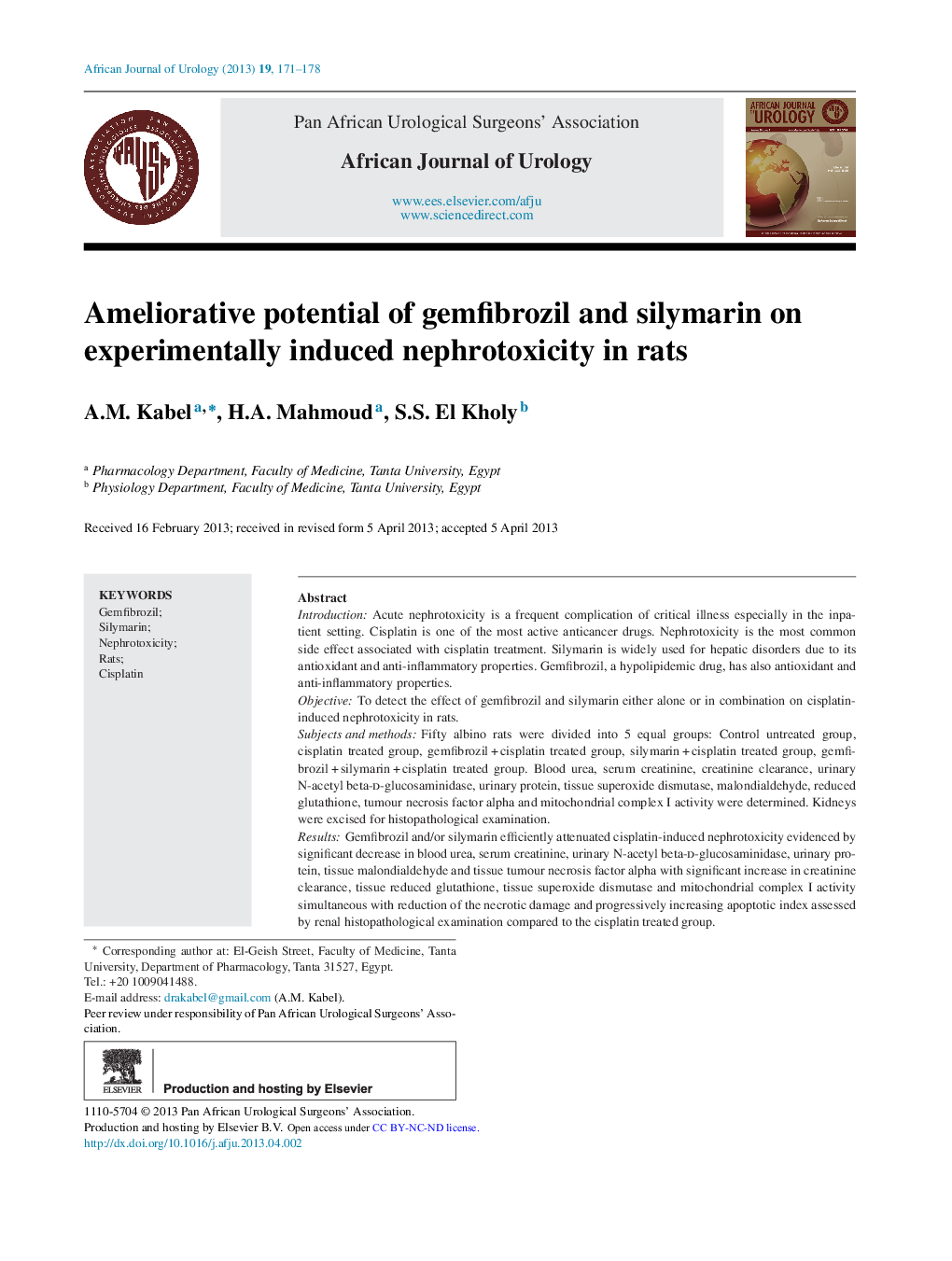| Article ID | Journal | Published Year | Pages | File Type |
|---|---|---|---|---|
| 4267673 | African Journal of Urology | 2013 | 8 Pages |
IntroductionAcute nephrotoxicity is a frequent complication of critical illness especially in the inpatient setting. Cisplatin is one of the most active anticancer drugs. Nephrotoxicity is the most common side effect associated with cisplatin treatment. Silymarin is widely used for hepatic disorders due to its antioxidant and anti-inflammatory properties. Gemfibrozil, a hypolipidemic drug, has also antioxidant and anti-inflammatory properties.ObjectiveTo detect the effect of gemfibrozil and silymarin either alone or in combination on cisplatin-induced nephrotoxicity in rats.Subjects and methodsFifty albino rats were divided into 5 equal groups: Control untreated group, cisplatin treated group, gemfibrozil + cisplatin treated group, silymarin + cisplatin treated group, gemfibrozil + silymarin + cisplatin treated group. Blood urea, serum creatinine, creatinine clearance, urinary N-acetyl beta-d-glucosaminidase, urinary protein, tissue superoxide dismutase, malondialdehyde, reduced glutathione, tumour necrosis factor alpha and mitochondrial complex I activity were determined. Kidneys were excised for histopathological examination.ResultsGemfibrozil and/or silymarin efficiently attenuated cisplatin-induced nephrotoxicity evidenced by significant decrease in blood urea, serum creatinine, urinary N-acetyl beta-d-glucosaminidase, urinary protein, tissue malondialdehyde and tissue tumour necrosis factor alpha with significant increase in creatinine clearance, tissue reduced glutathione, tissue superoxide dismutase and mitochondrial complex I activity simultaneous with reduction of the necrotic damage and progressively increasing apoptotic index assessed by renal histopathological examination compared to the cisplatin treated group.ConclusionThe combination of gemfibrozil and silymarin has protective effects against cisplatin-induced nephrotoxicity in rats better than each of these drugs alone due to anti-inflammatory and antioxidant properties of the used drugs.
